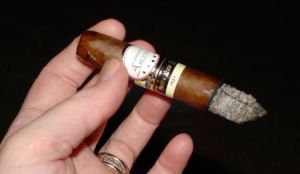Forty seven varieties of genetically pure cigar tobacco were lost in the Cold War. With Fundación Ancestral, Tabacos de la Cordillera intends to resurrect a few of them.
John Vogel, the agronomist behind Tabacos de la Cordillera, tells a tale of woe for the Cuban cigar lover: when Fidel Castro seized control and the United States embargoed the island, the Cubans turned to the Soviet Union for economic assistance. But the Russians were not interested in premium cigars. They wanted sugar. So the Cubans effectively abandoned the research facilities and seed banks that supported the cigar industry and stepped up the growing of sugar cane for the Russkies instead.
Over time the professionals who nurtured the crops and rolled the leaves into the world’s best cigars fled the country. New plagues like blue mold and black shank attacked the remaining strains, and without the facilities and expertise to combat them, the quality of the final product declined. The cigar boom of the ’90s brought a huge new demand to the market, prices soared, and the Cubans found no incentive to improve an export for consumers with deep pockets and no regard for quality or consistency.
As Vogel says, “Cuba forgot how to make cigars.”
Vogel has made the protection and stewardship of pre-Castro Cuban tobacco his life’s work. As an agronomist and geneticist working with tobacco for forty years he has been able to collect a bank of genetically pure pre-Castro Cuban seeds, the products of which have been used in puros like the Fundación Ancestral line.
But the question remains: what good are Cuban seeds without Cuban soil? Vogel’s somewhat controversial opinion is that Cuban “terroir” is not irreproducible. He believes that his ancestral seeds grown in the mountains of Costa Rica share the same potential as those grown in Cuba, and with proper care and engineering may in fact produce even better cigar tobacco. But the fact is that most of us simply don’t know what a genuine pre-embargo Havana tastes like, and those of us who do had that experience a very long time ago. The controversy seems somewhat academic to me. At the end of the day what we really want to know is how the cigar smokes, regardless of provenance.
There are currently three varieties of Fundación Ancestral available from Tobaccos de la Cordillera: a full bodied Pinar del Rio 1941, a medium bodied Artemisa 1944, and this one, the Vuelta Abajo 1940 which is billed as medium to full. Two more varieties, the Santa Clara and the Remedios, are “in aging” and should be available soon. These are all puros utilizing different primings from the same plants grown in the same mountain vegas of Costa Rica. Four shapes are made: a double-corona sized “Churchill,” a robusto, a torpedo, and this one, a 6 1/4 x 44 corona.
The wrapper on this corona is a consistently shaded colorado claro with evenly spaced fine veins. The head is well formed, but on close inspection the single cap looks a little sloppy. The cap shears off perfectly with a guillotine, so perhaps in this case it pays not to look too closely.
The scent on the wrapper and foot is of mild sweet tobacco — very inoffensive and placed well away from the barnyard. The roll is solid and feels uniformly packed. The draw is a little bit tight, and delivers a bright hay-like taste on a cold pull.
Most cigars identify themselves immediately, like politicians and their political parties — they’re either earthy or woody or leathery. Sometimes it’s a combination of the three, in different proportions, but usually one or the other base flavor gains prominence as the smoke progresses. But this Vuelta Abajo corona surprised me with unusual flavors from the first puff.
Eventually this cigar settled down into the earthy category, with some woody leanings, but it had enough subtlety and complexity to keep my palate guessing for a while. There is no bitterness and absolutely no bite to this cigar, just smooth cool sweet tobacco flavors. The flavor on the palate is earthy, but not dirty — the way it settles on the palate as the finish grows is really nice. The aroma on the other hand, adds a mildly spicy woody element, something akin to sandalwood, but in a very muted way. The flavor on the palate, the fragrance on the nose, and the aftertaste all have distinctive qualities of their own that combine in a complex and balanced manner.
Into the second third the body builds to about a medium in texture and the flavor remains extremely clean. The burn on this corona is absolutely perfect, requiring nothing more than admiration to keep it smoldering in a level line. The ash is a solid medium gray, and while the draw remains tighter than I prefer, it’s not a serious impediment.
The flavors get a little darker after the mid-way point as woodier flavors take over and bring their tannins to bear. Against the drier backdrop the aroma seems a little sweeter, but otherwise it seems unchanged. This cigar can easily be smoked past the band since the flavors don’t dirty or get bitter. One of the really distinctive aspects of this smoke is how clean it tastes.
And in case you were wondering, it doesn’t really taste like any of the “modern” Havana cigars I’ve been lucky enough to get my hands on. That said, I think the Fundación Ancestral is better than many of them.
Unfortunately, there is one more trait that the Fundación has inherited from its Cuban ancestors: its price tag. The corona size runs around 12 USD per single cigar, or $288 per box. Ouch. As a special treat I think this cigar is up there with other mild to medium bodied super-premiums, but I do wish they were a little more affordable.





5 thoughts on “Fundacion Ancestral Vuelta Abajo 1940 Corona”